Sydney and NSW mid-north coast under evacuation orders, Kempsey to go under water
Several towns on the NSW mid-north coast have been cut off by the floods, requiring helicopters to drop off supplies like bread and milk.
Residents of Sydney and the NSW mid-north coast have been given middle-of-the-night evacuation orders as rivers in the state threaten to burst their banks.
Flooding in the Hawkesbury Nepean Valley is the worst in Sydney’s west since the 1961 Penrith flood.
In Kempsey, on the mid-north coast, the Macleay River is expected to break its levee around midday on Tuesday. That would send the town’s CBD under water.
“It’s a very significant event, we’re predicting moderate to major flood levels (after the levee breaks),” Kempsey deputy mayor Anthony Patterson said.
“That’s why there’s an evacuation order for the business district of Kempsey.”
Mr Patterson said the river level had temporarily dropped on Monday afternoon, but continued rainfall further west would send flood water rushing down the river system towards the town.
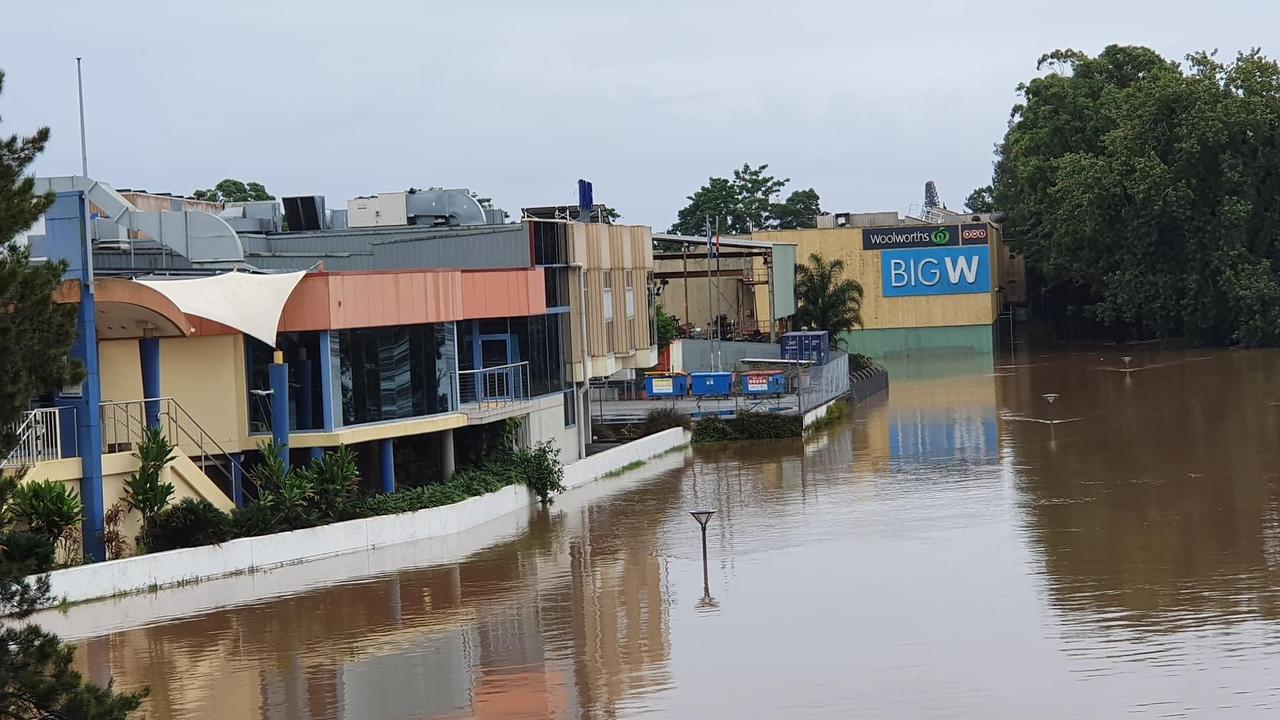
Shortly before 2pm the water level was 6.2 metres higher than normal. When it exceeds 6.7 metres it will overflow.
NSW Premier Gladys Berejiklian said she was “extremely worried” about the situation there.
“There are parts of the mid-north coast we are extremely worried about, including Kempsey and Taree,” she told reporters on Monday.
Some nearby towns had been completely cut off from the rest of the community by the floods, requiring helicopters from Kempsey airport to fly by and drop off supplies like milk, bread and nappies, Mr Paterson said.
Those towns included Crescent Head, Hat Head, Southwest Rocks, Smithtown and Gladstone.
Since Thursday, the area had copped 860mm of rain, Mr Paterson said.
But even with all the chaos – suburbs that have been evacuated, homes that have floated away, towns that have been covered in water and livestock that has been left stranded – Emergency Management Minister David Littleproud said it could get even worse.
“This potentially is a very dangerous situation,” he told ABC Breakfast.
“Everyone needs to understand the magnitude and gravity of what could be coming over the coming 24-48 hours.”
The Macleay river near the Kempsey traffic bridge has now risen to 6.1mtrs.... it breaks levee at 6.6mtrs. The town is divided into two. No access to the CBD, which is expected to go under,
— Grace Fitzgibbon (@gracefitz_9) March 21, 2021
Possibly within the hour. @9NewsSydpic.twitter.com/skD6dDBz0w
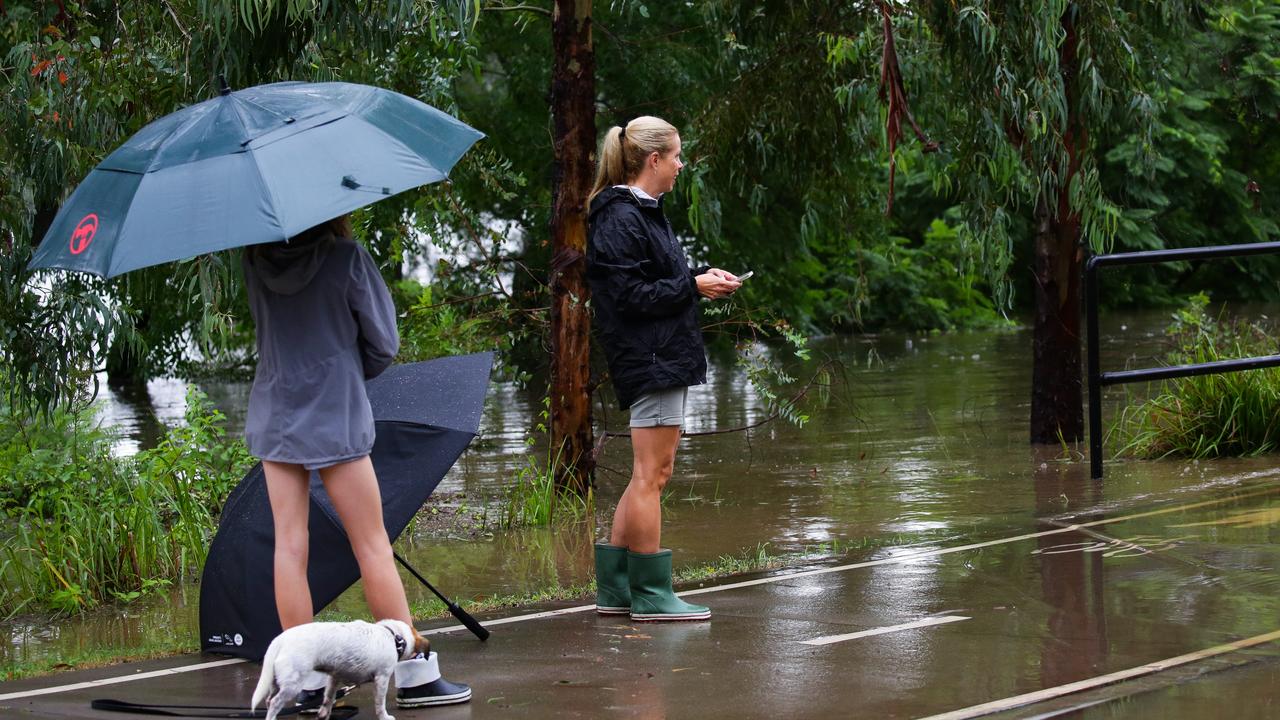
He said if rain fell in the wrong areas, particularly over the Hawkesbury-Nepean, more than 54,000 residents could be impacted.
“If it falls in the wrong catchment areas, then potentially this could cause considerable problems for us,” Mr Littleproud said.
“We are hoping that doesn't happen.”
He urged residents to prepare to evacuate and ensure they were listening to the ABC for updates.
The Nepean River at Penrith peaked at 10.05m on Sunday night, its highest level in 40 years, the Bureau of Meteorology said in a statement early on Monday morning.
Kate Dukes, 45, who lives just a block from the Nepean River in Penrith, said she and her family decided not to evacuate despite warnings to do so because their home was situated at a high enough point to avoid the floodwater.
“Our elderly neighbours were evacuated, and it was good to see them leave, because if we were flooded in and unable to leave the street that would have been a major concern,” she said.
Watching the river approach its peak on Sunday night felt monumental, she said.
“It felt historical to watch, these things don’t happen very often.”
The Hawkesbury River at Windsor is expected to peak around 13m by Monday evening, with major flooding expected, the bureau warned.
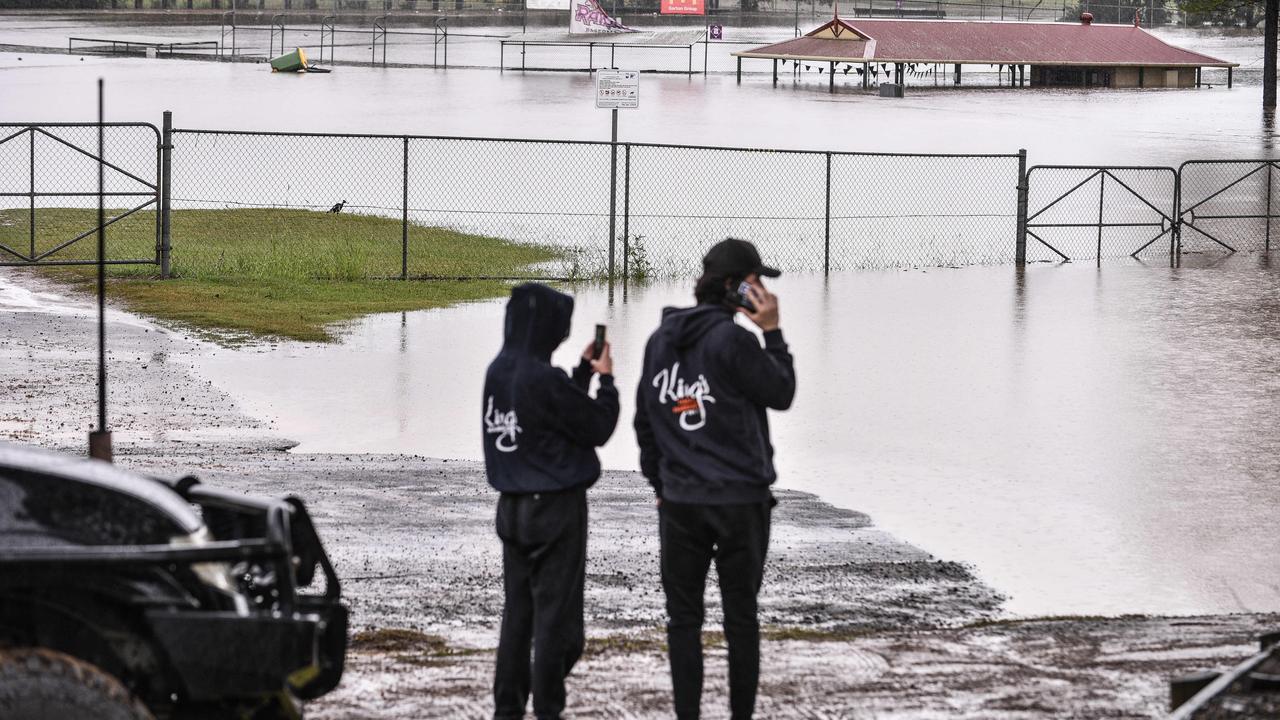
Warragamba Dam, which began spilling over on Saturday afternoon, is expected to continue overflowing on Monday.
The BOM warned the danger wasn’t confined to the coast – the state’s west could receive increased rain from Monday as well.
People in the Hawkesbury and surrounding areas, including the Windsor CBD, McGraths Hill, South East Windsor, Wilberforce, Marsden Park, Riverstone and Schofields, were told to evacuate by 9am on Monday.
The Castle Hill RSL at 77 Castle Street was set up as an evacuation centre.
While Major #Flooding is occurring in #Sydney's west it's also important to be aware this is a large & widespread event. Western #NSW will see increased #rain from Monday & many areas will see more rain on Tuesday. Check regularly for updates https://t.co/sNdzpEYEQ1@NSWSESpic.twitter.com/uEQpjjSlAc
— Bureau of Meteorology, New South Wales (@BOM_NSW) March 21, 2021
On the mid-north coast, Kempsey residents were told just before midnight to evacuate immediately.
Evacuations were already under way in parts of western Sydney over the weekend, as streets became submerged in rainwater and low-lying homes were drenched.
There have been 19 evacuation orders listed on the State Emergency Service website in the past three days, along with evacuation warnings for several other areas across the state.
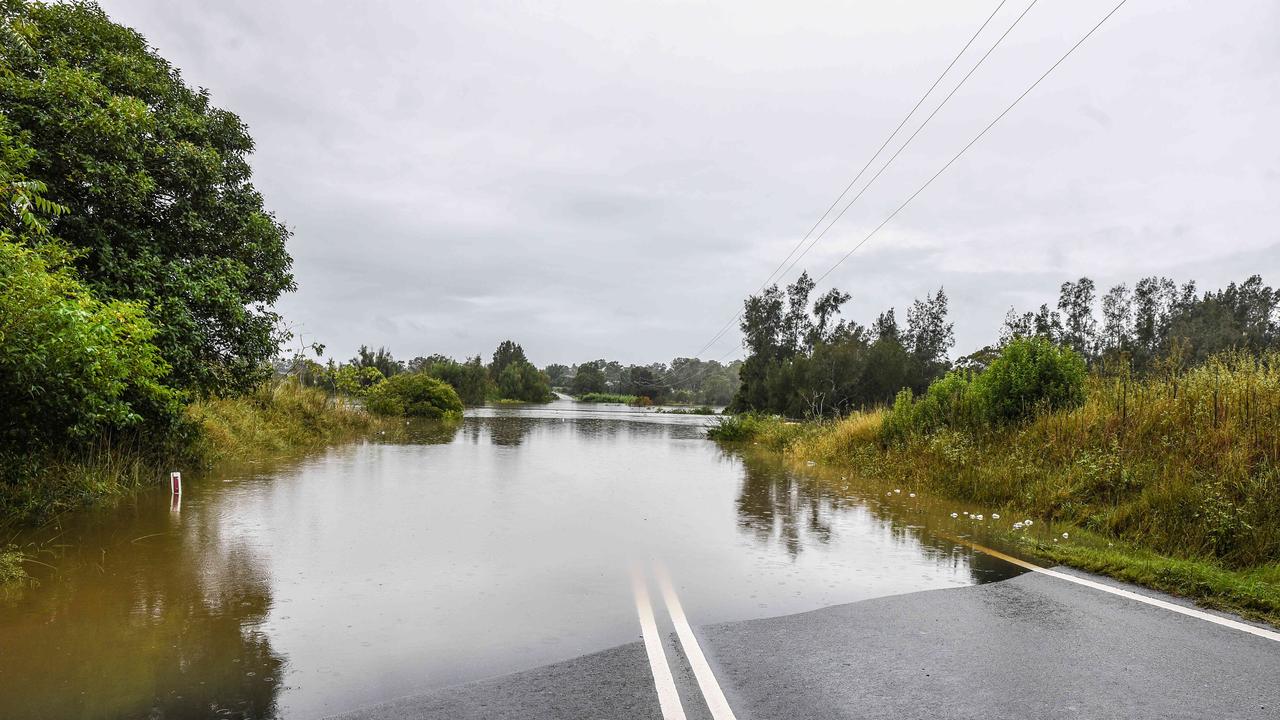
Rolling evacuation orders for western Sydney started on Sunday.
Shortly before 2am, Pitt Town North, Pitt Town Bottoms, Cornwallis and Grono’s Point residents were told to evacuate immediately.
At dawn, people who live in low-lying areas of North Richmond were told to leave their homes. Freemans Reach residents were told to get out by 9am.

Residents of low-lying areas in Agnes Banks were told to evacuate by midday and people in western Penrith by 4.30pm.
People who live in Jamisontown, Regentville and low-lying parts of Mulgoa Creek were told to evacuate by 9pm.
Those orders followed evacuation orders for low-lying areas of Taree CBD, Taree Estate, Dumaresq Island, Cundletown, Central Wingham and Wingham Peninsula.
Prime Minister Scott Morrison said the floods across NSW were “another testing time for our country”.
“There are very, very serious and very severe storms and floods,” Mr Morrison told 2GB.
“It is a matter of pulling through, together, once again.”
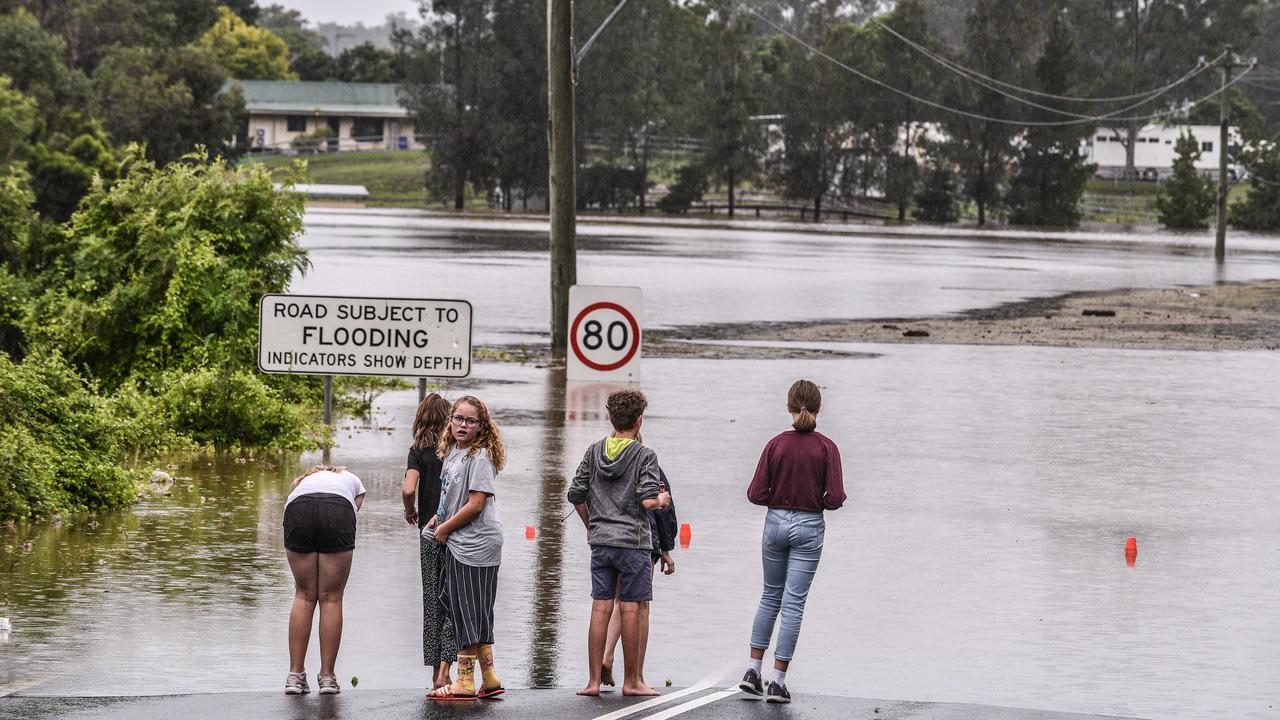
Mr Morrison said the NSW government was yet to request support from the Defence Force, although helicopters were on standby to assist with search and rescue operations.
“We expect later today we will start getting requests for the recovery operations on the other side so we‘re readying ourselves for that.,”he said.
He said emergency payments of $1000 for adults and $400 for children were already in place for people in affected areas via Services Australia.
Disaster recovery payments are available for people in 34 local government areas.
Read related topics:Sydney



